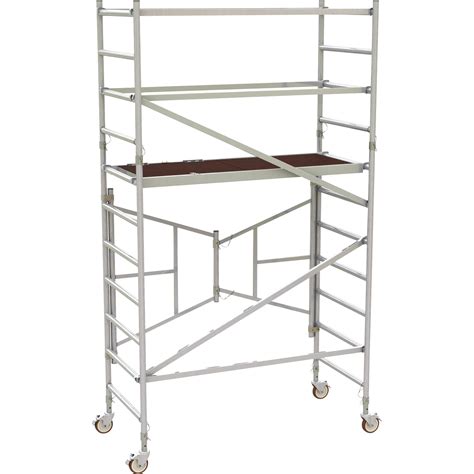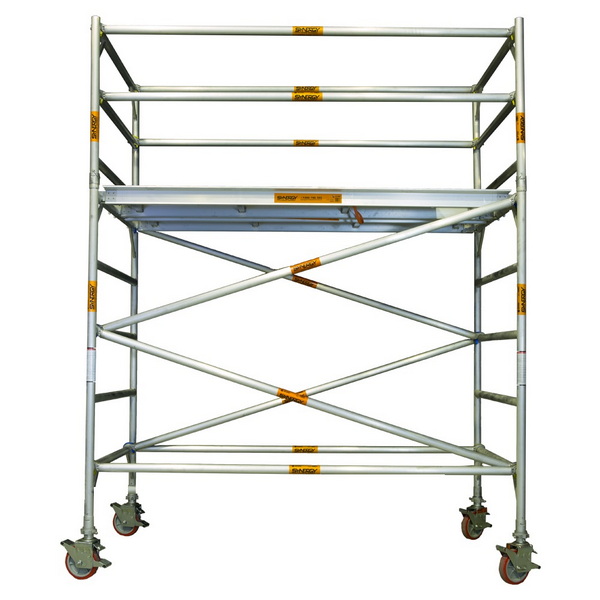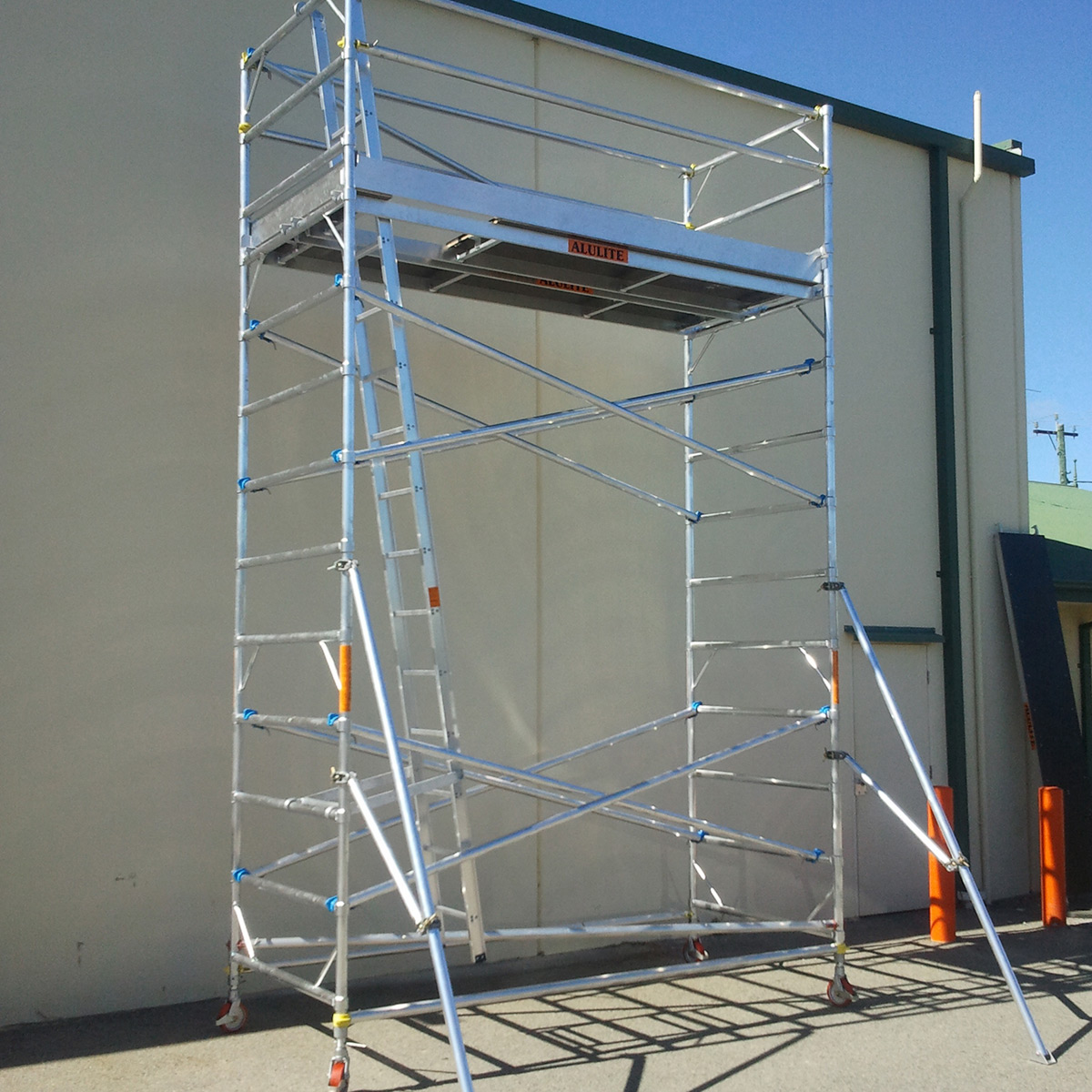Content Menu
● Introduction to Aluminum Scaffolding
● Types of Aluminum Scaffolding
● Weight of Aluminum Scaffolding
● Comparison with Steel Scaffolding
● Load Capacity of Aluminum Scaffolding
● Calculating Load Capacity
● Height-to-Base Ratio
● Safety Considerations
>> Safety Tips
>> Legal and Regulatory Compliance
● Maintenance and Repair
● Repairing Damaged Components
● Environmental Considerations
● Market Trends
● Impact of Technology
● Economic Benefits
● Cost Comparison
● Case Studies
● Benefits in Practice
● Conclusion
● FAQ
>> 1. What is the typical weight of aluminum scaffolding?
>> 2. How do I calculate the load capacity of aluminum scaffolding?
>> 3. What safety features should I look for in aluminum scaffolding?
>> 4. How often should I inspect aluminum scaffolding?
>> 5. What are the environmental benefits of using aluminum scaffolding?
● Citations:
Aluminum scaffolding is a popular choice in the construction industry due to its lightweight, durability, and ease of assembly. Understanding the weight of aluminum scaffolding is crucial for transportation, setup, and ensuring safety on job sites. This article will delve into the factors affecting the weight of aluminum scaffolding, provide insights into its load capacity, and discuss how to calculate its weight.

Introduction to Aluminum Scaffolding
Aluminum scaffolding is preferred over other materials like steel due to its portability and corrosion resistance. It is commonly used for tasks such as painting, roofing, and window installation. The scaffolding's design allows for easy setup and teardown, reducing labor costs and increasing efficiency on job sites.
Types of Aluminum Scaffolding
1. Rolling Towers: These are mobile scaffolding units that can be easily moved around the job site.
2. Narrow Scaffolding Towers: Ideal for tight spaces, they offer a compact footprint while maintaining stability.
3. Aluminum Plank Scaffolding: Used for creating platforms at various heights.
Weight of Aluminum Scaffolding
The weight of aluminum scaffolding is significantly less than steel scaffolding. Aluminum scaffolding is about 75% lighter than steel scaffolding of the same size[5]. The weight of a standard aluminum scaffold tube can be calculated using the formula:
Weight (KG)=0.00879×wall thickness×(out diameter−wall thickness)×length (m)
For example, a loose aluminum scaffold tube with a diameter of 48.3 mm and a wall thickness of 4.47 mm weighs approximately 1.72 kg per meter[1].
Comparison with Steel Scaffolding
Aluminum scaffolding is three times lighter than steel scaffolding due to its lower density. Aluminum has a density of 2.7 g/cm³, while steel has a density of 7.85 g/cm³[1].
Load Capacity of Aluminum Scaffolding
The load capacity of aluminum scaffolding varies based on its duty rating:
- Light-duty: Supports up to 25 pounds per square foot (122 kg/m²)[7].
- Medium-duty: Handles up to 50 pounds per square foot (244 kg/m²)[2].
- Heavy-duty: Can hold around 75 pounds per square foot (366 kg/m²)[2].
Typically, a standard aluminum scaffolding platform can bear between 225 kg to 300 kg, which is equivalent to the weight of two men plus some tools and light equipment[1].
Calculating Load Capacity
To ensure safety, always follow the manufacturer's guidelines and consider factors like environmental conditions and terrain stability when determining the load capacity.
Height-to-Base Ratio
A common safety guideline is to maintain a height-to-base ratio of 4:1 to prevent instability[4].
Safety Considerations
Safety should always be the top priority when using aluminum scaffolding. Here are some essential safety tips:
Safety Tips
- Proper Training: Ensure all workers receive adequate training on assembly and use.
- Regular Inspections: Inspect scaffolding components for damage or wear.
- Fall Protection: Use guardrails, toeboards, and personal protective equipment (PPE).
Legal and Regulatory Compliance
Ensure that the scaffolding meets local safety regulations and standards. Non-compliance can result in fines or legal issues.

Maintenance and Repair
Regular maintenance is crucial to extend the lifespan of aluminum scaffolding. Here are some tips:
- Cleaning: Regularly clean the scaffolding to prevent dirt buildup.
- Lubrication: Lubricate moving parts to ensure smooth operation.
- Inspection: Regularly inspect for damage or wear.
Repairing Damaged Components
If you find damaged components during inspection, consider repairing or replacing them.
Environmental Considerations
Aluminum scaffolding is more environmentally friendly than steel due to its lighter weight, which reduces transportation emissions. Additionally, aluminum is recyclable, making it a sustainable choice for construction projects.
Market Trends
The demand for aluminum scaffolding is influenced by market trends such as the rise in DIY projects and home renovations. As more homeowners take on small-scale construction tasks, the need for affordable scaffolding solutions increases.
Impact of Technology
Advancements in technology have led to more efficient scaffolding designs and materials. However, traditional aluminum scaffolding remains popular due to its reliability and cost-effectiveness.
Economic Benefits
Using aluminum scaffolding can offer significant economic benefits, including reduced upfront costs and lower maintenance expenses compared to purchasing new equipment. This makes it an attractive option for small businesses and individual contractors.
Cost Comparison
Here's a comparison of the costs associated with new versus used aluminum scaffolding:
| Type | New | Used |
| Price | Higher | Lower |
| Maintenance | Higher | Lower |
| Durability | High | High |
Case Studies
Several construction companies have successfully utilized aluminum scaffolding for large-scale projects, highlighting its efficiency and cost-effectiveness. For example, a recent high-rise building project in New York City used aluminum scaffolding to reduce setup time and increase worker safety.
Benefits in Practice
- Efficiency: Aluminum scaffolding allowed for faster setup and teardown, reducing labor costs.
- Safety: The lightweight nature of the scaffolding made it easier to handle, reducing the risk of accidents.
Conclusion
Aluminum scaffolding is a versatile and efficient tool in the construction industry, offering significant advantages over steel scaffolding in terms of weight and ease of assembly. Understanding its weight and load capacity is crucial for safe and effective use. By following safety guidelines and maintaining the scaffolding properly, you can ensure a successful project.

FAQ
1. What is the typical weight of aluminum scaffolding?
Aluminum scaffolding is significantly lighter than steel, with a standard tube weighing about 1.72 kg per meter.
2. How do I calculate the load capacity of aluminum scaffolding?
Load capacity depends on the duty rating (light, medium, or heavy-duty) and factors like environmental conditions. Typically, a platform can bear between 225 kg to 300 kg.
3. What safety features should I look for in aluminum scaffolding?
Ensure that guardrails, toeboards, and other safety components are intact and meet safety standards.
4. How often should I inspect aluminum scaffolding?
Regular inspections are crucial to identify any damage or wear and ensure safety.
5. What are the environmental benefits of using aluminum scaffolding?
Aluminum scaffolding is lightweight, reducing transportation emissions, and is recyclable, making it a sustainable choice.
Citations:
[1] https://www.wm-scaffold.com/aluminium-scaffolding/
[2] https://scaffoldingforhire.com.au/scaffolding-load-capacity/aluminum-scaffolding-weight-limits-and-safety/
[3] https://amscaffold.com/sw180-single-width-aluminium-scaffold-tower/
[4] https://fmafactory.com/blog/what-is-the-load-capacity-of-aluminium-scaffolding-and-what-are-the-main-types-of-scaffolding-used-in-the-construction-field/
[5] https://www.tytruss.com/newsclass_3/Comparison-aluminum-scaffolding-steel-scaffolding%20.shtml
[6] https://aaitscaffold.com/blog/what-are-scaffold-weight-limits/
[7] https://www.metaltech.co/download/METALTECH_Aluminum_Scaffolding.pdf
[8] https://aaitscaffold.com/uncategorized/steel-scaffolding-vs-aluminum-scaffolding-aait/






















